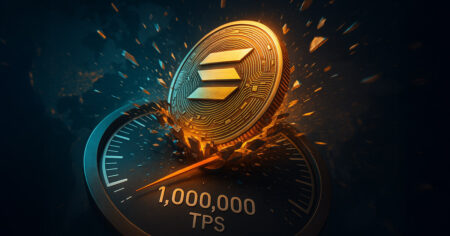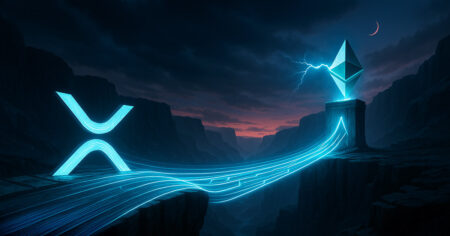The following article is an op-ed by Daniil Shcherbakov,
As 2024 comes to an end, the Web3 gaming industry is still at a crossroads. Often touted as the future of gaming, with promises of true freedom for players, it has also become a graveyard for ambition — 75% of projects launched between 2018 and 2023 failed within a year.
And as the industry stands on the brink of 2025, hopes are high, but the cracks are hard to ignore. The market is holding its breath, awaiting this year’s statistics.
But before we speculate on Web3 gaming’s next chapter, it’s crucial to take a closer look at 2024 — a year that could signal evolution or underscore stagnation. Has the industry begun to adapt and mature, or is it doomed to repeat its mistakes, perpetuating its image as a high-risk gamble cloaked in hype?
The Endless Cycle of Rising and Fading Stars
One part of the story is that 2024 has indeed added another chapter to the graveyard of failed Web3 gaming projects — even for those initially perceived as trusted and sustainable.
Take Dimensionals, for example, a project that initially embraced NFTs but eventually chose to abandon the Web3 model altogether. Or Shrapnel, which was once heralded as a promising venture but has destabilized its development trajectory by internal legal battles and abrupt team changes. Meanwhile, Illuvium, despite its ambitious plans to release three interconnected games simultaneously, is struggling with a core challenge — retaining and engaging players.
This is a familiar narrative for Web3. Time and again, the industry has been undermined by recurring pitfalls: uncertain regulatory environments, lackluster user experiences, and poorly conceived economic incentives. And in 2024, many participants in the Web3 gaming sector still believed they could continue to overpromise and underdeliver, focusing more on speculative hype than on genuine entertainment value.
That’s why, despite growing recognition of blockchain’s potential in ownership and monetization, the gaming space risks becoming another cautionary tale akin to NFTs, ICOs, and early play-to-earn models. Without fundamental changes, if projects continue to compete only in terms of token and user acquisition, rather than delivering gameplay experiences as compelling as Assassin’s Creed or World of Warcraft, the industry could stagnate further.
On a Dark and Gloomy Road, Glimmers of Hope Shine Through
But despite its turbulent history, 2024 has marked a potential inflection point for Web3 gaming — a year when innovation started cutting through the noise.
Telegram, for example, has moved beyond simplistic gaming models to release games with greater complexity and depth. Examples include DRFT Party, offering an ultimate racing experience; Durov Run, a Subway Surfers-style game with a unique twist — an action-packed, non-stop running experience on Telegram; Catizen, engaging cat-themed social entertainment; and Tons of Dungeons, a treasure for fans of games featuring endless dungeons filled with rewards and traps.
By integrating blockchain features in a seamless, user-friendly way and focusing on community-driven engagement, the platform is finally embracing what gaming should be: immersive, meaningful, and genuinely engaging.
Major Web2 game publishers like Ubisoft and PlayStation have also stepped up, proving that blockchain in gaming has real demand and applications. Ubisoft’s Champion Tactics has demonstrated how AAA studios can leverage technology to deliver true player ownership without compromising gameplay.
Similarly, PlayStation’s Off the Grid is a testament to how blockchain can enhance immersion and add meaningful value rather than serving as mere gimmick. These are no small feats — Ubisoft and PlayStation signal that blockchain gaming is edging closer to mainstream acceptance.
Even more telling is the institutional shift toward Web3 gaming. The Malaysian Digital Economy Corporation’s partnership with CARV highlights a new wave of governmental support. Such initiatives suggest that even national economies see Web3 gaming not just as a niche experience but as a scalable, long-term opportunity.
And this momentum is changing the narrative. If Web2 gaming giants, a global superapp, and governments alike are willing to invest in and champion Web3 gaming, they clearly recognize its untapped potential. The demand is real, the evolution is visible, and for the first time in years, the industry can truly break free from its cycle of hype and failure. These aren’t just glimmers of hope — they’re the building blocks of a sustainable future.
Gamers Are Wiser Now, Sadly for Many Who Came Just for Quick Cash
So, games are definitely slowly but steadily shifting from play-to-earn models toward play-AND-earn ones. But this transformation didn’t happen overnight because publishers randomly decided it was time for quality projects. It stems from an undeniable reality: players are becoming resistant to poor experiences that rely solely on token drops as incentives.
Gamers have sent a clear message: they seek entertainment, not schemes designed to drain their wallets or waste their time with speculative earning promises. Successful projects understand that compelling gameplay, not just tokenomics, must sit at the core of their design.
Another significant evolution is how players perceive blockchain assets. Utility now reigns supreme. Players are no longer swayed by hollow promises of asset ownership and interoperability. They demand items that genuinely enhance their gaming experience — unique skins, characters, and tools that add tangible value, can be moved between games, or are tradable with other players.
Projects that fail to adapt to these demands risk alienating their core audience, with player retention rates dropping day by day. This shift highlights an important trend: gamers are taking control of the industry’s future and shaping it on their terms, whether or not some game publishers accept it.
This Time, Players Are Setting the Rules of the Game
So, there is good news and bad news. The bad news: Web3 gaming remains at a crossroads, with some projects stuck between outdated gaming models and meaningful new designs. The good news: there are promising signs of progress.
Over the next 3–5 years, the sector’s trajectory will be shaped by the success of casual and mobile games that integrate blockchain technology seamlessly and usefully. Models like Play-to-Own and Create-to-Earn, which reward players for enhancing games and inspire creativity, will lead the way.
However, for most Web3 games to achieve true parity with their Web2 counterparts, they must hit several critical milestones. First, accessibility must take center stage: games need to be intuitive and enjoyable, even for players unfamiliar with cryptocurrency.
Second, forging valuable partnerships with established Web2 industry leaders will be essential for credibility and broader adoption. Third, the sector must navigate regulatory hurdles effectively, as no level of player engagement can compensate for a lack of security and compliance.
Most importantly, Web3 gaming must demonstrate why blockchain integration is a necessity in this new era of gaming freedom. Only by achieving these goals can Web3 gaming fulfill its potential and emerge as a solid alternative to the legendary, classic stories of Web2 gaming.

Read the full article here









